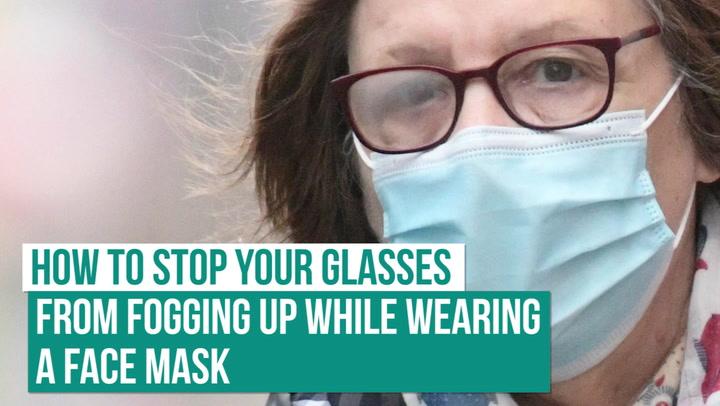How to stop glasses fogging up with a face mask – five hacks and tips explained
Face coverings have become mandatory again on public transport and retail settings in the UK, as the government works to slow the spread of the new Omicron coronavirus variant.
Wearing a mask keeps you safe but it come with its own set of challenges such as acne and rashes.
And, one of the biggest downfalls of wearing a mask - if you use glasses - is how much your lenses fog up and hamper your vision.
Taking off your glasses to wipe them clean each time it fogs up is not only frustrating, but it can also increase the risk of infection. So the key is to prevent or minimise fogging due to face masks.
Here’s the science behind why your lenses fog up and some tricks to stop it.
The science behind fogging is simple. It’s caused by the difference in temperatures between our breath, our lenses and the environment.
The air we breathe our has water molecules which are forced up through poorly fitted masks onto the lenses of our glasses.
Since the air we exhale is usually warmer than the temperature of our glasses, it causes the air to condense onto to our lenses and fog them up.
There are several tips and tricks to stop your glasses from fogging. These are five of the top tips.
One of the hacks that has been seen around the internet to prevent foggy lenses is twisting your mask straps once before wearing them and tucking them behind the ears.
From the side, once you twist it, the elastics will look like the figure eight.
This is great for stopping fogging because it redirects your breath by putting slight downward pressure on the top part of the mask. Though, it's worth noting that it does create a slight gap between the mask and your face that may leave you vulnerable.

A nose wire helps to seal the top of your mask and prevents warm air from seeping through.
While most surgical masks already have built-in nose wires, you can easily make one of your own for any mask with pipe cleaners, paper clips, or jewellery wires, all of which can be secured along the mask with fabric glue.
If your mask doesn't have a nose wire and you can't make one, you can simply secure the top and sides of your mask with surgical tape for the same protection.
If you wash your glasses with soap, this creates a thin film on your lenses which limits fogging.
Use a fragrance-free soap and mix it with warm water. Soak your glasses in it and let it air dry. When you wear your glasses next, soap molecules on your lenses should block condensation.
It's best if you let your glasses soak in overnight, but if you want to wear your glasses right away then make sure to gently wipe them with microfibre cloths, which usually come with your glasses.
You can put a tissue under the top part of the mask which will help catch air and moisture, keeping your lenses free of fog.
To do this DIY trick properly, you should fold a tissue in half and place the straight edge along the bridge of your nose.
Make sure you have a steady supply of tissues on hand so that you can change the tissue once it becomes damp from your breath.
If you pull up your mask and draw your glasses down, it can block your breath from rising upwards. But if you do this there are a few things to keep in mind.
Firstly, you need to make sure that your mask still covers your chin after you pull it up. And, if your prescription is stronger, this trick could impact your vision and cause increased blurriness.
While any of the above tips work great to prevent fogging, the type of mask you wear also matters.
Qualities you should look for in a mask include :
Read More
Read More








